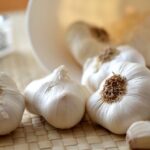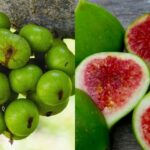The Sour Season: A Guide to Choosing and Preserving the Perfect Sour Fruit
The sour season typically spans from June to September annually. This tart fruit offers a crisp, refreshing taste and can be used in cooking or made into a refreshing drink. Research has shown that sour fruit is packed with glucose, organic acids, calcium, phosphorus, protein, cellulose, iron, and vitamin C.

The sour fruit is typically in season from June to September. Illustrative image
Consuming this fruit offers a range of benefits, including cooling the body, detoxification, weight loss, treating mouth sores, and reducing nausea for pregnant women.
As the harvesting season for sour fruit is relatively short, you can purchase a batch and preserve it to enjoy throughout the year.
Choosing Between Young and Mature Sour Fruit
Experienced homemakers share that the best sour fruit is one that is neither too young nor too ripe, often described as “bread-like.” This stage offers a crisp, white flesh with a pleasant sour taste, free from excessive tartness. To select the perfect bread-like sour fruit, keep the following in mind:
– Shape: Look for sour fruit with a moderate size, neither too big nor too small, ideally round in shape.
– Skin: The skin of bread-like sour fruit is thin and a vibrant green, with a slightly bumpy texture. Avoid fruit with overly smooth skin, as it indicates immaturity and tends to be overly sour, prone to early spoilage.
– Flesh: When cut open, the ideal sour fruit will reveal a thick, white flesh that is aesthetically pleasing.
– Taste: Bread-like sour fruit strikes a perfect balance between tartness and sweetness, avoiding the extreme sourness of young fruit or the hint of sweetness found in riper ones.
Tips for Selecting the Best Sour Fruit

Choose sour fruit with uniform shapes and avoid those that are bruised or damaged for easier preservation. Illustrative image
Observe the shape: Opt for sour fruit with uniform shapes and avoid those that are bruised or damaged. A good sign of quality is a bumpy, evenly green skin without any black spots.
Test for firmness: Gently press the sour fruit with your finger. Avoid fruit that is too soft or too hard. The ideal sour fruit will have a pleasant crispness when pressed.
Consider size: Choose sour fruit of moderate size, neither too big nor too small. Larger fruit tends to have more fiber and less flesh, while very small fruit can be excessively sour and seedy.
Buy from reputable sources: Purchase sour fruit from reputable fruit vendors or stores to ensure quality and avoid chemically treated or spoiled fruit.
Long-Term Preservation Techniques for Sour Fruit
Fresh Sour Fruit Preservation:
Select the right sour fruit: Choose sour fruit that is evenly green and free from damage or bruising. Riper fruit tends to spoil faster than younger fruit.
Clean thoroughly: Rinse the sour fruit under running water to remove any dirt or bacteria.
Air-dry: Allow the sour fruit to air-dry completely on a rack or clean cloth.
Refrigerate: Place the sour fruit in an airtight container or plastic bag and store it in the refrigerator’s crisper drawer. This method can keep the fruit fresh for about 1-2 weeks.
Freeze: Cut the sour fruit into thin slices or peel and place them in ziplock bags or airtight containers before freezing. This technique can preserve the fruit for several months.
Preserving Prepared Sour Fruit:
Pickled sour fruit: After pickling, transfer the sour fruit to sterilized glass jars, fill the jars with the pickling liquid, and seal tightly. Store the jars in a cool, dry place. This method can preserve pickled sour fruit for several months.
Sour fruit jam: Prepare the jam following a standard recipe, then transfer it to sterilized glass jars, seal tightly, and store in a cool, dry place. This preservation method can keep the jam edible for several months.
Sour fruit relish: Make the relish according to your preferred recipe, then transfer it to sterilized glass jars, cover with the pickling liquid, and seal tightly. Store the jars in a cool, dry place. This technique can preserve the relish for several months.
Additional Notes
It is advisable to consume preserved sour fruit within 2-3 months to ensure the best quality and flavor.
Avoid storing sour fruit in direct sunlight or high temperatures.
Regularly inspect the preserved fruit and discard any that shows signs of spoilage.
Source: Nguoiduatin
What Do Torrent Pitted Olives Taste Like?
The Oliu Torrent Pitted Olive brand is a renowned and beloved name in the market. But what makes this brand so special? Let’s delve into the world of Oliu Torrent and uncover the secrets behind its success. With a rich history and a dedication to quality, this brand has captivated the hearts of consumers and established itself as a true icon. Stay tuned as we explore the fascinating journey of Oliu Torrent and discover why it has become a household name.







































